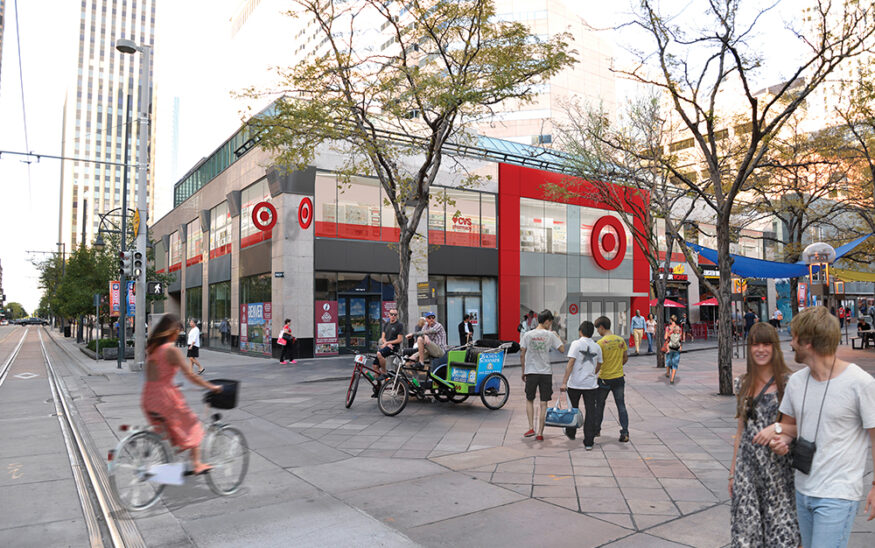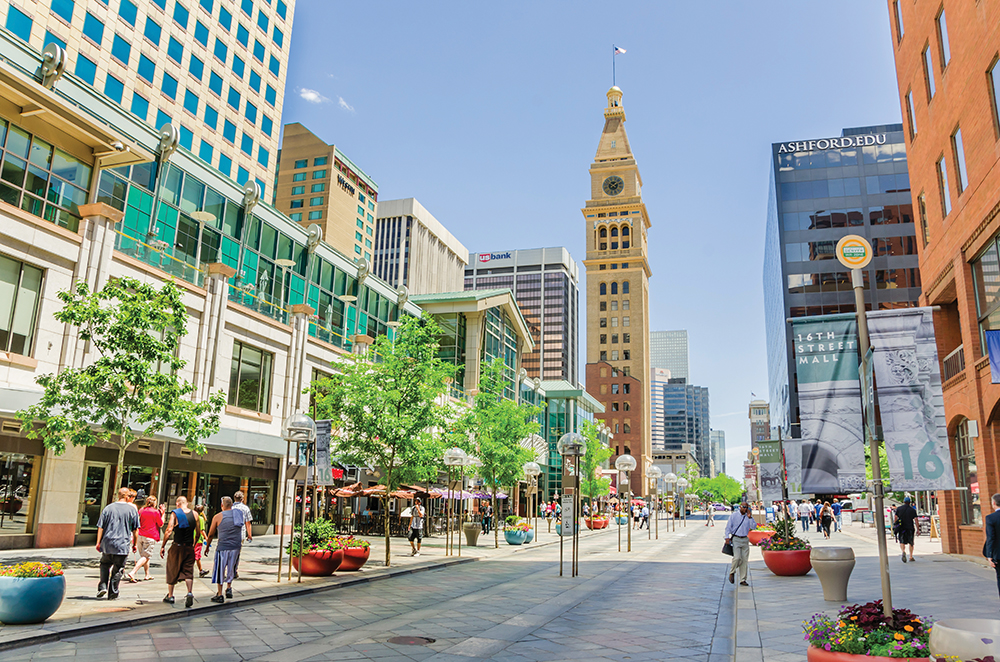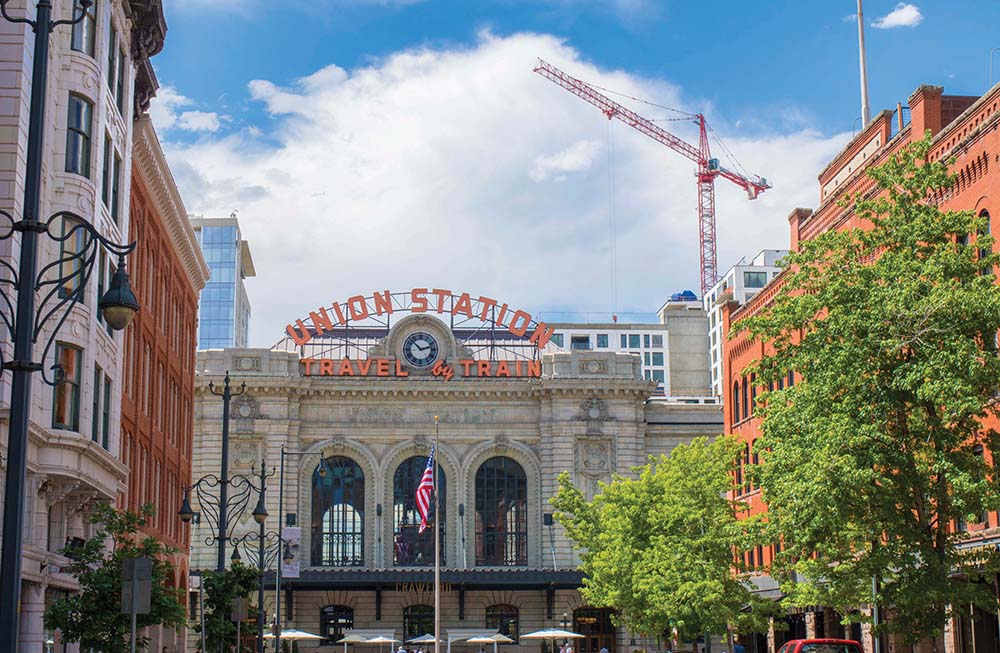No Down Time Downtown
Retail investors attuned to Denver's 24/7 work-play-live evolution
Nora Caley //August 20, 2018//


No Down Time Downtown
Retail investors attuned to Denver's 24/7 work-play-live evolution
Nora Caley //August 20, 2018//

When Target announced last year that it would open a smaller format store in downtown Denver, the Minneapolis-based mass retailer was not just heralding another location to buy scented soy candles, K-beauty cosmetics and private label trail mix. The announcement seemed to indicate that the central business district is evolving from an eight-hour workplace destination to a 12-hour work/play destination to a 24-hour work/play/live destination.
“When we evaluate new store locations, we analyze extensive data to identify areas where Target can help fill a need,” spokesperson Jacque DeBuse says. “The size and vibrancy of Denver’s downtown community, including daytime professionals and round-the-clock residents, present Target with an opportunity to serve new guests, and we’re thrilled to open our doors this summer.”
The Target grand opening July 22 also served as evidence that Downtown Denver Partnership’s 20-year Downtown Area Plan, which began in 2007, was on track. The plan includes making the city prosperous, walkable, diverse, distinctive and green.
“We addressed place-making, economic development, public policy, safety, security, mobility — we look at all of these components,” says Tami Door, president and CEO of the Downtown Denver Partnership. “We have made incredible progress.”
Retail experts agree Denver is evolving.
“We are in a sweet spot between second-tier city and superstar city,” says Mark Sidell, president of Gart Properties, the developer of the Target store in the California Mall building on 16th and California streets. “It’s an envious position to be in because there are many things that come with being a superstar city that are a burden, such as paralyzing traffic, which we do not have.”

Traffic and other issues are covered in Downtown Denver Partnership’s report, “Trans-forming Mobility in Downtown Denver.” The report, released in March, outlines how residents commute to work, how the numbers compare with other cities and how the organization is working to reduce the share of commuters driving alone to under 35 percent by 2021. Over the past five years, the report notes, downtown Denver’s population grew 30 percent, and 39 percent of commuters drive alone. In fact, 61 percent of downtown commuters say they would use transit if driving was too expensive or took too long.
The report also notes that efforts are being made to make parking easy to find and access, through technology that connects drivers to available options. Any suggestion that there is not enough parking in Denver is anecdotal, Door says.
“Downtown Denver still has extensive surface parking lots,” she says. “We walk shorter distances to get to destinations than almost any other city.”
A growing number of these pedestrians live in one of the rental apartments nearby. “If you look at that Target on 16th and California, if you move five blocks northwest, you see five major apartment developments containing 1,500 total units,” says David Pierce, market analyst at CoStar Group. “In greater downtown, there are 6,000 units under construction on top of 10,000 that delivered over the last four years.”
Pierce adds that developers are looking at neighborhoods outside of RiNo and LoDo, which have been inundated with new supply. The Washington Park neighborhood, for example, just had its first major apartment development of this cycle break ground. “Overall, developers are achieving far higher rents in the greater downtown area than in any other part of the metro,” he says.
One seemingly counterintuitive detail in the Downtown Denver Partnership’s mobility report was that the number of people using public transit decreased, from 44.6 percent in 2012 to 39.3 percent in 2017. That might change with the continued construction of light rail and apartments near light rail. In 2013, Pierce says, 40 percent of apartment units were located within two miles of a light rail station, and in 2020 that figure will increase to 70 percent of all apartment units.
The shift in the types of shopping available in the central business district is also helping the area evolve. “If you went up and down the 16th Street Mall there is no shortage of retail options, but Target gives it more of a 24/7 work-play-live feel,” Pierce says.

Also according to the Downtown Denver Partnership’s mobility report, retail sales in downtown Denver have grown 50 percent in the past five years. While that includes new locations of grocery stores such as the King Soopers and Whole Foods near Union Station, there are also stores that sell more than commodities that are available online. “The retail we see thriving is experiential retail,” says Joseph Vostrejs, principal at City Street Investors, which renovated Union Station into a mixed-use development in 2014. “You can’t buy an experience over the internet.”
That includes stores where shoppers can customize everything, from the fabric on their messenger bag to the food a chef puts on a plate. “There is a reason to go there that is more than just, ‘I need a shirt,’” Vostrejs says.
The bigger trend, he explains, is that downtown is offering more options for the so-called third place, which is where people spend time when they are not at home or at work. “That third place is becoming an important part of living downtown,” he says. “You walk out your door, and you’ve got so many choices now.”

While cafés or bars might be traditional third places, for some it’s the gym. In May, Planet Fitness opened a 19,000-square-foot location on the second floor above Walgreen’s on the 16th Street Mall. The facility is open and staffed 24 hours a day, and the customers range from people coming in early to avoid the morning traffic to those heading home from work. “We get third-shift workers, bartenders, nurses. Instead of going out for late night activities, they have a place they can work out,” says Jonny Jost, one of the family member owners of the franchisee Jost ADK. “We definitely get quite a few millennials, but we have all ages.”
Even the office market is helping to make the area more of a 24/7 work-play-live destination. Last year, Goldman Sachs Asset Management’s Private Real Estate (PRE) team acquired the Colorado Bank Building in partnership with Harbor Associates.
“We believe there is an opportunity to acquire character buildings like the Colorado Bank Building,” says Joseph Sumberg, a managing director at the financial services firm and head of its private real estate team. Plans for the building, renamed The Vault, include flexible office layouts and ground floor retail and entertainment.
For its part, the Downtown Denver Partnership is now in the second half of its 20-year plan. “Years back we were dealing with challenges and opportunities to help us grow,” Door says. “Now our focus is how to address challenges brought forward
























